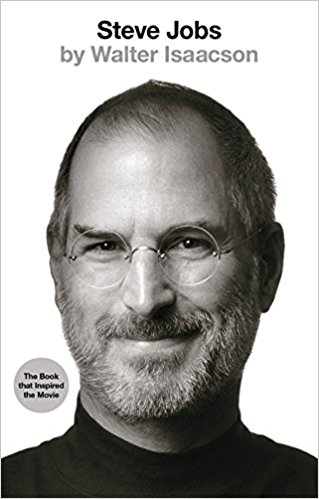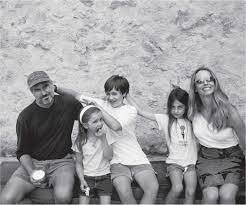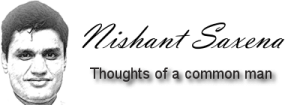Steve Jobs
Author: Walter Issacson
Genre: (Auto) Biography

Walter Issacson (former chair of CNN, editor of TIME Magazine, written biographies of Einstein, and most recently on mRNA) was asked by Jobs to write his biography. He wrote this in 2011 and it instantly became an international bestseller breaking all records of sales of biographies. This is said to be unfiltered (Jobs did not review and allowed open access to himself and over 100 family member and friends).

This biography is think (42 chapters) and is written chronologically starting from Steve Jobs’ childhood. He was the love child of a couple named John Jandali and Joanne Schieble who could not get married and put out the child for adoption. He was later adopted by Paul and Clara Jobs, who raised him using words like ‘chosen’, ‘special’ etc. and this became part of who he was and how he regarded himself. Paul, being an engine technician, introduced Jobs to the world of mechanics, engineering and design. They moved to California, the area called as ‘Silicon Valley’.
He met Steve Wozniak in an electronics class who was 5 years older than Jobs but both realized they shared similar goals and ideas. Their friendship later revolutionised technology industry for generations to come. First, they developed Blue Fox, an instrument to make long distance calls free of cost. They were selling it quite well but one night it was stolen from them at gun point. After that Jobs wanted to study in Reed college which was popular for its Hippie culture. Its tuition fee was high for Jobs parent but to fulfil their son’s wish they agreed. There he was still pulling pranks on others, started adopting strange diets, didn’t shower for more than a week and started experimenting with drugs like LSD, Marijuana etc. He was interested in everything else except attending the class. After a year he dropped out of the college and went to his parents. Jobs even came to India to search for spiritual calm.

A technological revolution was beginning in Silicon Valley. Woznaik had joined an informal group of computer geeks called Homebrew Computer Club. He saw demonstration of microprocessor there after which he came up with an idea of making a personal computer with keyboard, screen and computer all in one package. Job converted this idea into a business idea and soon with $1300 start-up capital founded Apple. Woznaik and Job worked for long hours and made 100 computers. They sold 50 to a local vendor and the other 50 to friends and other customers. Apple became profitable within 30 days. Jobs realised that Apple 1 lacked polish, finesse and presentation compared to products of larger companies. So, while working on Apple 2, he required a venture capitalist. That is when Markkula invested in the company, and became like a mentor to young Jobs and Woznaik. Eventually Apple 2 became a huge success and Apple grew beyond what Jobs could handle. Markkula then hired Mike Scott as company’s president majorly to manage Job. They would get into heated arguments often but they both worked for Apple’s future.
Jobs’ personal life was stormy. He was in a relationship with Chrissan Bernan since high school but he shied away from accepting their daughter Lisa (even after a paternity test confirmed it). After the success of Apple 2, Jobs was ready to launch Apple 3 and ‘Lisa’ – a powerful computer which was ahead of its time. Both his launches failed miserably. Jobs then struck a deal with Xerox for a second round of investment and for their graphic technology. He applied their graphic user interface, a technology where users could see graphics along with text on their screen. Then came Apple’s IPO where apple’s worth increased from $5309 to $1.79 billion, and Jobs was now worth US$256 million at the age of 25.

Jeff Raskin had started Macintosh project which he wanted to make affordable enough for most of the families to own one in each home. Jobs entered the project and instead mandated developing a great product regardless of the price. He also used his power to remove Mike Scott from his position. Jobs had an amazing quality of motivating employees to do anything. But he was also very straight forward in calling someone either enlightened or a loser. There is criticism that he would often present an employee’s idea as his own. Later, Jobs appointed Sculley, a former marketing director of Pepsi, who made sure that marketing was also considered as important as engineering. This pushed Macs prices further up and Jobs later said this was the main reason that Microsoft claimed the computer market. Jobs was announced as tech icon but soon Mac’s limitations were understood by users and its sale declined.
Finally in 1985, Jobs was forced out of Apple by the then CEO Sculley. Jobs started his own venture NeXT with his own money and also hired some of the engineers from Apple. After a flop operations at NeXT, he acquired 70% stake in Lucasfilm’s animation division for $10 million and renamed it Pixar. He then released a short animation Tin Toy which was a huge success and received Academy Award for best animated short film. It was a turning point for Jobs as he cracked a deal with Disney to make the now famous Toy Story.

Jobs dated many women, including singer Joan Baez who was 41 when Job was 14-year-old. After many hook ups, he found Laurene Powell at Stanford Business School where she was a student and he had gone to give an address. They got married and had 4 children.
After many ups and downs, NeXT was acquired by Apple and Jobs started working as an advisor in Apple. Gradually he appointed all of his favourite employees from NeXT at senior positions. After a while, Job took full control of Apple, got existing board to resign, got stock options for employees at top level, cancelled all deals with other computer manufacturers, and struck a deal with Microsoft. Think Different campaign was launched which featured luminaries like Einstein, Gandhi etc. After a year under Jobs, Apple recorded a profit of $309 million. He started streamlining all operations at Apple, making favourable deals with vendors & suppliers, and most importantly hiring Tim Cook as head operations.
Job had a fair vision for his products but was not happy with idea of selling products through others so he came up with the idea of Apple retail stores. Taking control was one of his characteristics and he did just that by opening the retail chain against the board’s will and finally proved them wrong.

His innovation continued. Music piracy was becoming a real pain for music companies, and that is where Jobs idea of introducing iTunes store worked wonders. Every song was sold at a price of $0.99 out of which $0.70 went to the music companies. Then came Iphone with brilliant cameras, Ipad with 3rd party apps, and Icloud. Before Jobs’ death, Apple surpassed Microsoft as the most successful tech company.
In 2003 Jobs learnt about his cancer during a routine urology test. He refused surgery and believed in alternative diets and treatment, which all went in vain, and his pancreatic cancer worsened. Eventually, he resigned as CEO and died in 2011.

Why Should you read this book: Apple has been one of the biggest success and era defining experiments of our times. The books tells us all that happened and most importantly about Steve Jobs. Sometimes the author seems to be biased towards Jobs mercurial behaviour but overall, it depicts the truth about Steve Job as a person right from his birth to his death. His anger issues, social mingling issues, health issues, his black and white attitude and more. And of course, his vast creativity. The readers will enjoy all the nuggets on his ups and downs, stories about lost friends, enemies, rebuilt friendships, manipulation, business strategies and about starting new companies. While the book is long, its sheer intensity keeps the readers engaged.
Goodreads Link: Steve Jobs by Walter Isaacson (goodreads.com)

 This information will never be shared with third party
This information will never be shared with third party
Post A Comment
Want to join the discussion?Feel free to contribute!